Grow Pittosporum ‘Cheesewood’ As Prized Specimen Shrubs Or Formal Hedgerows

SHRUBS > PITTOSPORUM

Elizabeth is a Permaculture Garden Designer, Sustainability Consultant and Professional Writer, working as an advocate for positive change. She graduated from the University of St. Andrews with an MA in English and Philosophy and obtained a Diploma in Applied Permaculture Design from the Permaculture Association.
Reviewed By DAN ORI

Dan has over 27 years’ under his belt caring for plants and gardens. Working as a Horticultural Instructor and Consultant, he draws on a diverse range of experience that includes working as a Head Gardener, Tree Surgeon, Garden Centre Trouble Shooter, and writer of academic papers. Dan has a Level 3 Diploma in Horticulture and is currently a candidate for the RHS’s most prestigious award – The Master of Horticulture.
PITTOSPORUM GUIDES
Pittosporums or ‘Cheesewood’ are evergreen shrubs or hedgerow plants which come in a wide range of shapes and sizes.
These useful evergreen shrubs are prized for their glossy evergreen leaves and can make great specimen shrubs, simple topiary plants, or formal hedgerows.
Although they are not suitable for all UK gardens, where the conditions are right, they can be a highly attractive addition.
Overview
| Botanical Name | Pittosporum |
| Common Name | Cheesewood |
| Plant Type | Shrub |
| Native Area | Australia, East Asia and parts of Africa |
| Hardiness Rating | H4 |
| Foliage | Evergreen |
| When To Plant | May-September |
| When To Prune | May-August |
Sunlight
Preferred
Full Sun or Partial Shade
Exposure
Sheltered
Size
Height
0.5 – 6M
Spread
0.5 – 6M
Soil
Preferred
Chalk, loam and sand
Moisture
Moist but well-drained
pH
Any
Pittosporum is a genus of around 200 species found throughout Australasia, Oceania, eastern Asia and parts of Africa.1Cheesewoods (Genus Pittosporum). (n.d.). iNaturalist United Kingdom. Retrieved March 22, 2023, from https://uk.inaturalist.org/taxa/51597-Pittosporum
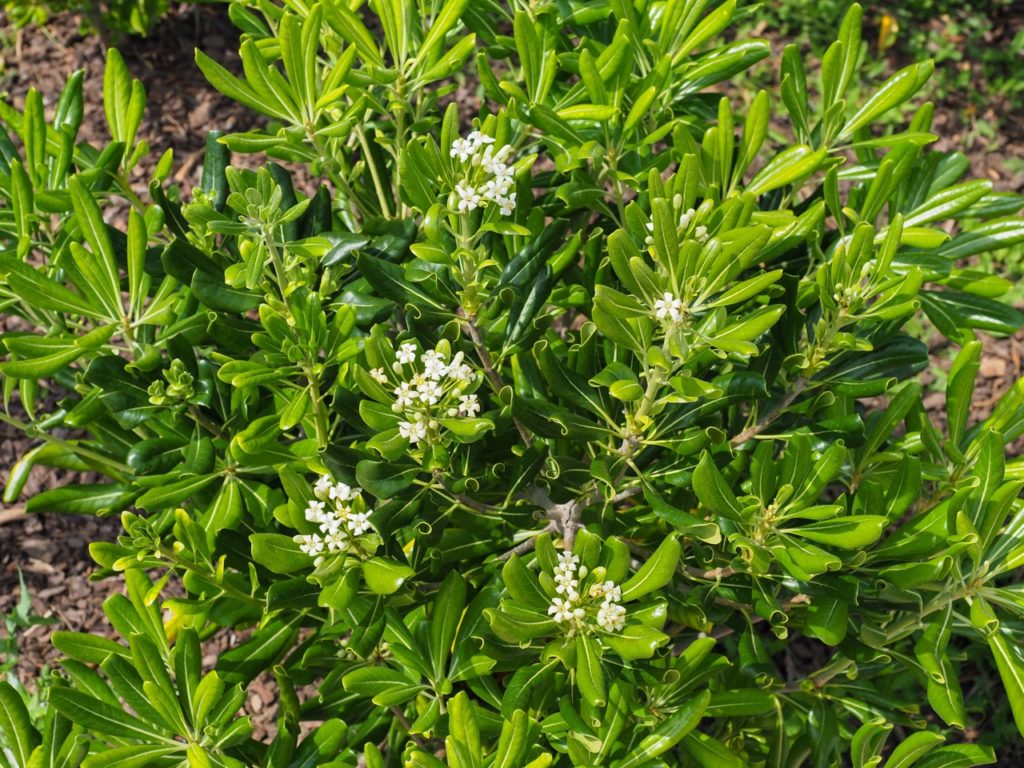
They are also commonly grown in gardens throughout subtropical and temperate zones, though some are also grown as bonsai plants indoors.
Common Varieties
When choosing a pittosporum to grow in your garden, the size to which it will eventually grow is one of the key considerations.
Pittosporums are usefully grouped into smaller compact shrubs which grow 1-2m tall, and medium to large shrubs.
Some compact pittosporum, which are good for small borders, low hedges or containers, are:

- P. tenuifolium ‘Country Park Dwarf’
- P. tenuifolium ‘French Lace’
- P. tenuifolium ‘Gold Ball’
- P. tenuifolium ‘Irene Paterson’
- P. tenuifolium ‘Silver Queen’
Some larger pittosporums for larger borders or higher hedging include:
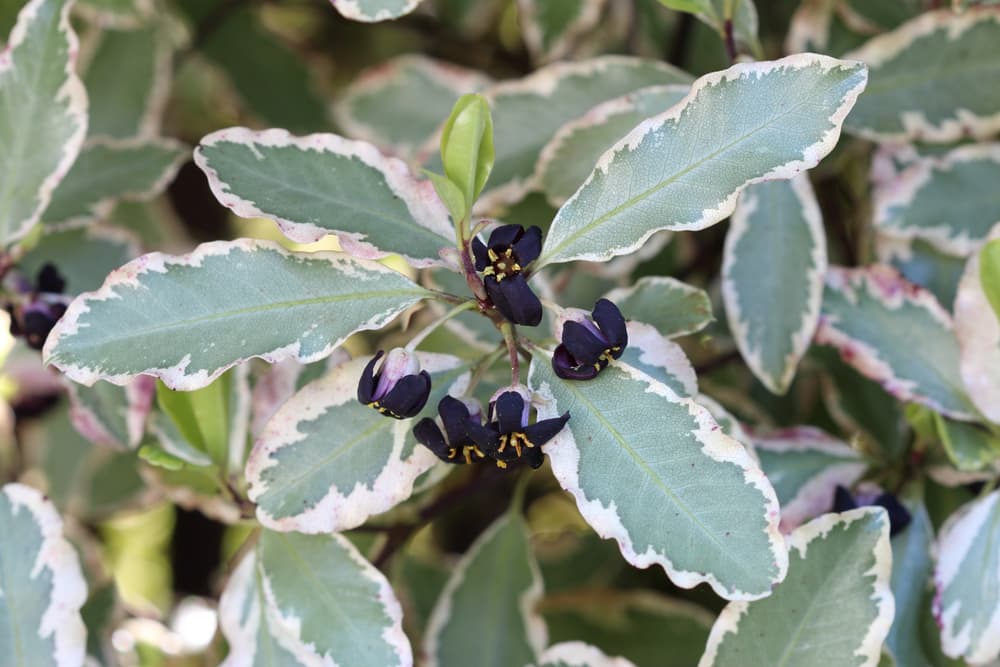
- P. tenuifolium ‘Abbotsbury Gold’
- P. tenuifolium ‘Elizabeth’
- P. tenuifolium ‘Oliver Twist’
- P. tenuifolium ‘Wendle Channon’
How To Grow Pittosporum
If you know someone with a pittosporum you admire in their garden, you could consider collecting the sticky seeds when the capsules break open, cleaning away the sticky coating and sowing in pots or trays of seed compost at 12-15°C.
However, it is worth noting that the plants which grow from these seeds may not look the same as the plant from which the seeds came, especially if you are dealing with a variety that has coloured or variegated leaves.
If you do decide to persist, you will also have to be patient, as germination will take a couple of months.
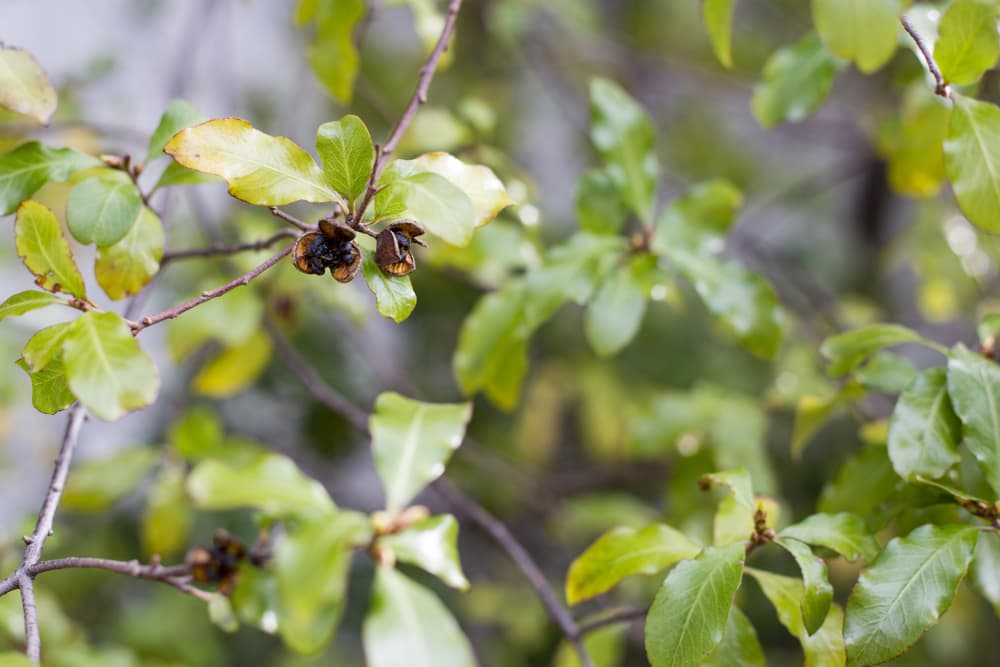
Most people will purchase plants to place in their gardens, but it should be noted that taking cuttings is another option for propagation.
We’ll talk about propagating pittosporum from cuttings a little later in this guide.
Pittosporum Plant Care
Pittosporum can be relatively easy to care for, but it is important to understand the conditions they require and to place them in a suitable spot.
Overwintering
Most pittosporums are H4 hardy.
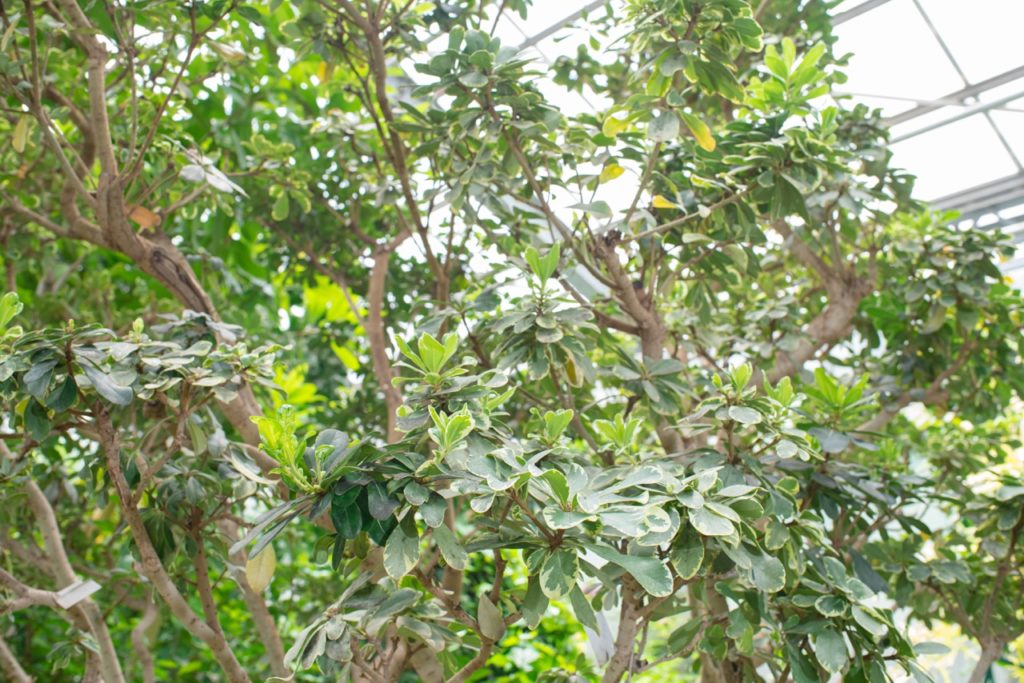
However, others, such as P. tobira, are conservatory plants, which must be grown inside over winter – though they may be able to go out over the summer months.
Aspect
Pittosporum will do best in a sheltered position in full sun or light shade.
It is important to make sure that the plants are protected from harsh, cold winds and not placed in frost pockets.
Variegated varieties will keep their colour best in a site which is as sunny as possible.
Soil Requirements
Pittosporums need well-drained soil, so any soil type which does not become too waterlogged can be suitable.
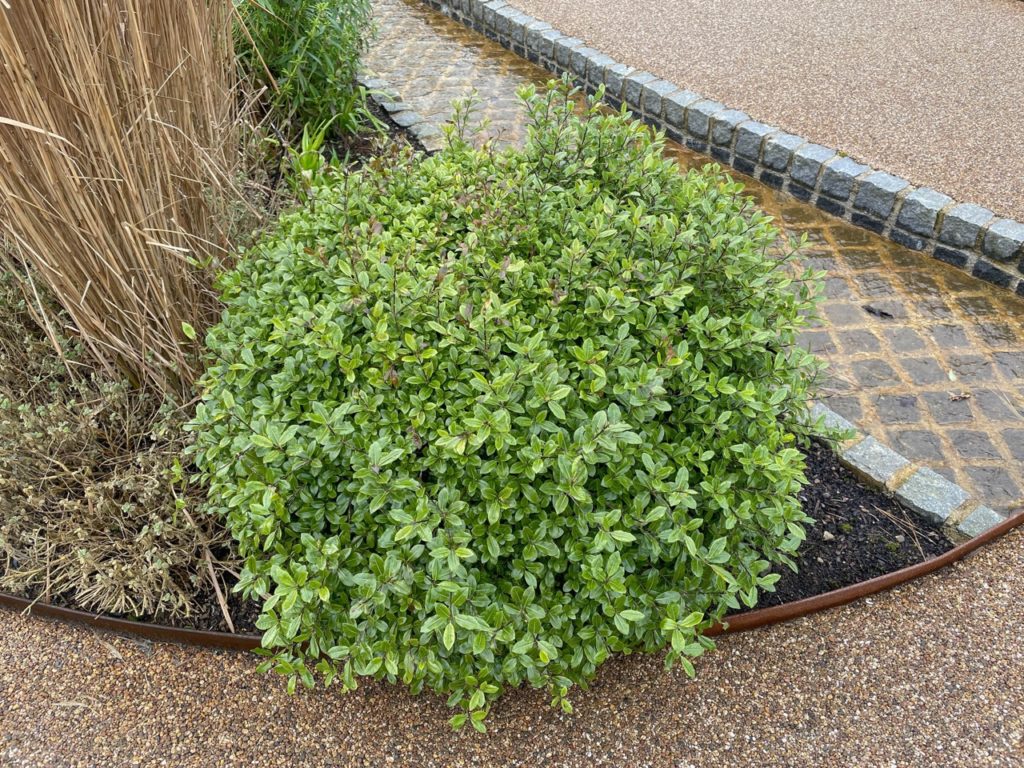
Compact cultivars grown in containers should be grown in a suitable free-draining medium and the container should have good drainage.
Make sure the soil or growing medium is rich in organic matter for moisture retention.
Pruning
Pittosporum should be pruned in mid-spring for single specimen shrubs.
Aim to prune out vigorous shoots which sprout out from the outline of the foliage, and try to develop a strong central stem and an enhancement of the plant’s natural shape.
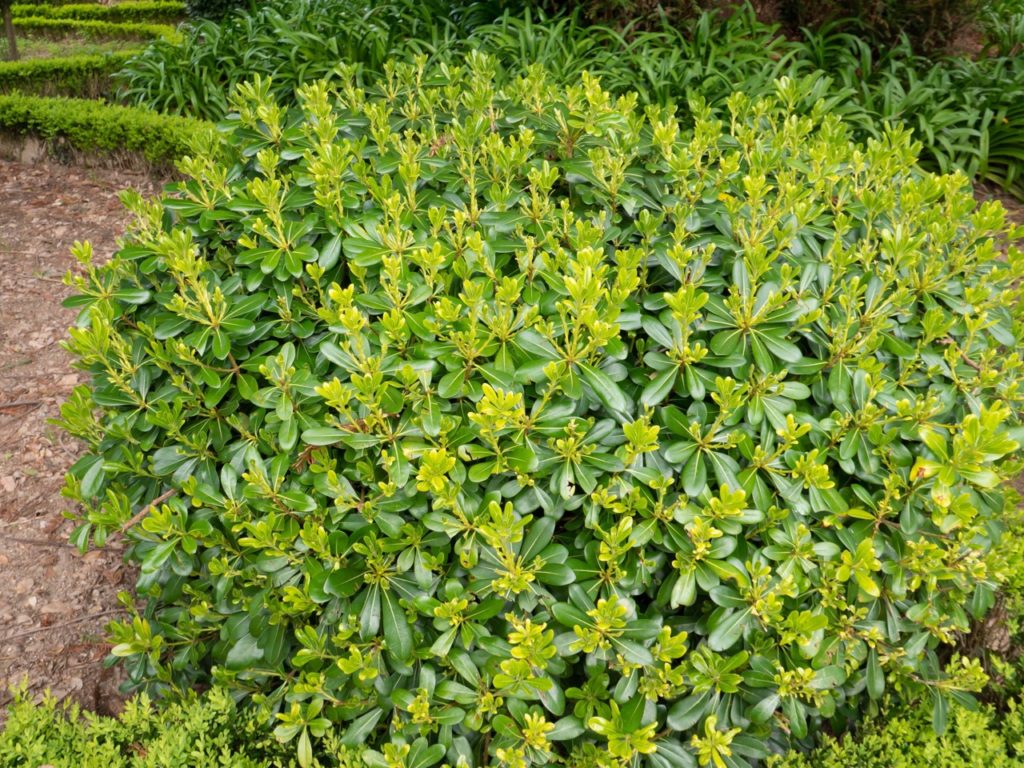
For hedges and topiary shapes, prune between the middle of spring and late summer.
Give the plants 2-3 cuttings during the growing season, pruning for the last time by the end of August.
Propagating
Pittosporum can be somewhat reluctant to root, so using a rooting hormone is recommended to improve rooting results.
The best option is to take semi-ripe cuttings in the late summer or early autumn.
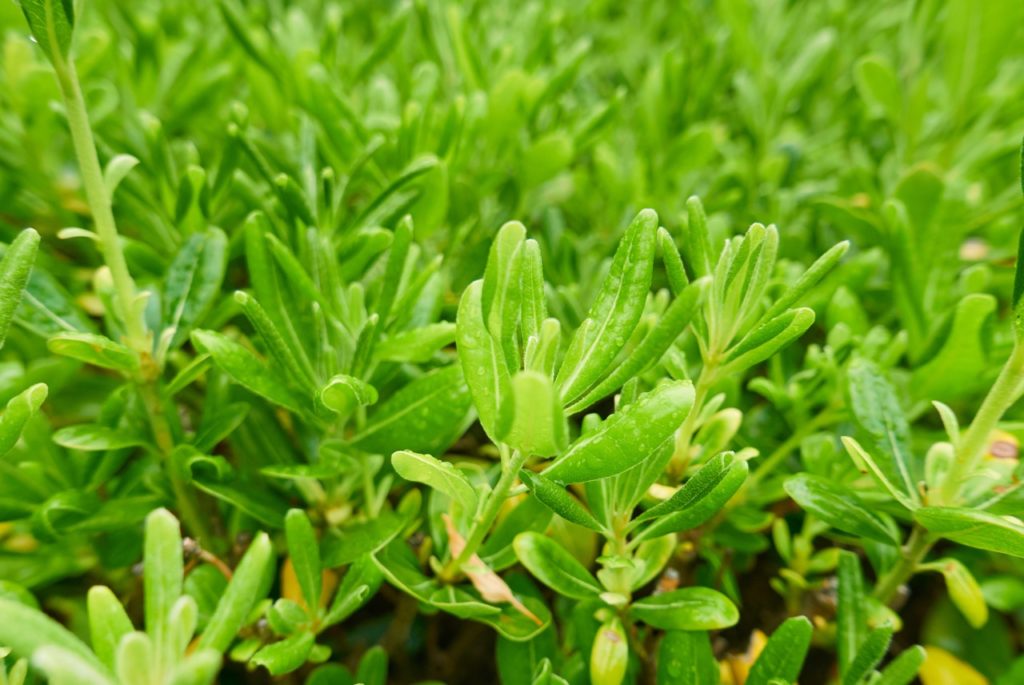
The cuttings should be around 6-8cm long and should be placed in pots filled with a suitably moist (yet free-draining) medium in a cool but frost-free spot – until they are planted out the following year.
Young shoots can also be layered in spring, though this is typically a more difficult propagation method.
Common Problems
Pittosporum is usually relatively trouble-free if grown in the right spot and cared for correctly.
Powdery mildew may affect the foliage but won’t usually need to be controlled.
“Pittosporums can be prone to frost damage, so I advise not planting them in frost pockets or exposed conditions,” says Master Horticulturist Dan Ori.
“During the first autumn or winter and late spring frosts, I use horticultural fleece to protect young plants and those grown in pots.”

Plants grown indoors may be affected by common issues like red spider mites and scale insects.
References
- 1Cheesewoods (Genus Pittosporum). (n.d.). iNaturalist United Kingdom. Retrieved March 22, 2023, from https://uk.inaturalist.org/taxa/51597-Pittosporum
